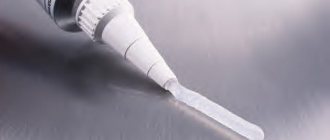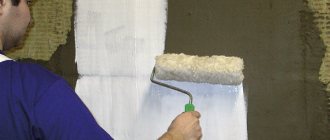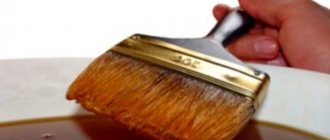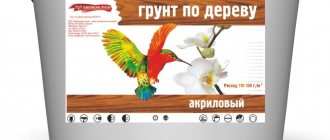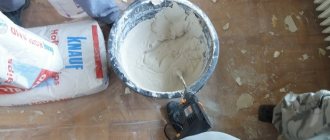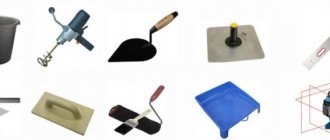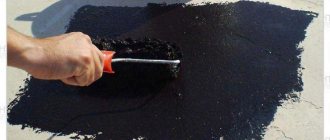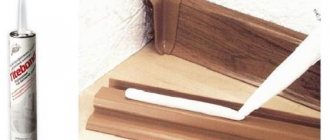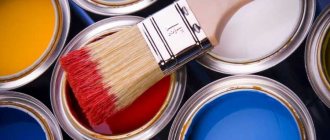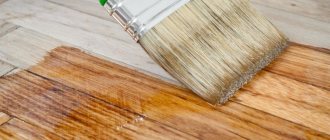There are rubber (neoprene) and acrylic (water-based compositions). The first, as already mentioned, are based on a rubber solvent, the second - on an acrylate base. Acrylic copolymers in water-soluble compositions can replace PVC or polyurethane.
LIQUID NAILS: ADVANTAGES AND DISADVANTAGES
The unique composition and convenient form of packaging allows us to talk about the numerous advantages of liquid nails:
- highest connection strength. The composition can withstand loads of up to 80 kg/cm2;
- good adhesion to almost all existing materials;
- ease of use;
- the composition can be used for gluing not only smooth surfaces, but also when materials do not adhere tightly. Liquid nails simplify installation on curved surfaces;
- such glue does not destroy the surface or damage its integrity, unlike ordinary nails;
- liquid nails are not subject to corrosion;
- the installation process takes place without noise, knocking, dust and dirt;
- the glue sets in a matter of seconds;
- modern formulations are non-toxic. A rare exception is dubious products from nameless companies at unreasonably low prices;
- high fire resistance. Moisture resistance and frost resistance are characteristic only of neoprene compounds, weakly expressed in water-based adhesives;
- most formulations have a mild, almost neutral odor;
- economical consumption. One drop of material can withstand a load of up to 50 kg.
disadvantages to liquid nails, if you do not take into account some restrictions on the use of different types of glue.
Glue liquid nails: types and purpose
The characteristics of the drug are determined by its composition. There are two types.
Water soluble
Their base is acrylic copolymers, PVC or polyurethane. They have fairly high adhesion to most building materials, but there are exceptions. For example, polyurethane solutions cannot be used on Teflon and polyethylene, and acrylic solutions “work” only on porous substrates. Moreover, they are all environmentally friendly. The main disadvantage is considered to be destruction at subzero temperatures.
Organosoluble
To understand what liquid nails of this type are, you need to know: the basis of the composition is synthetic rubber. This gives them greater strength and better adhesion. The drugs set quickly and are completely stable at low temperatures. They are successfully used even in unheated buildings. One of the disadvantages is the presence of a pungent odor; for this reason, you should work with pastes only in ventilated areas. They may ignite during application and subsequent curing.
Liquid nails are used for gluing a wide variety of materials. The drugs set quickly and are completely stable at low temperatures
The scope of application of solutions is very wide. You can glue tiles, dissimilar and homogeneous parts made of metal, ceramics, fiberboard, chipboard, wood, brick, glass, polystyrene onto liquid nails. The glued area can withstand loads of up to 80 kg/sq.m. cm, looks aesthetically pleasing. It is possible to connect surfaces that are not completely adjacent. The preparation will fill the unevenness; this will not affect the strength of the resulting joint.
What to look for when buying
In addition to the information about the purpose written on the pipe with liquid nails, other information is an important guideline when purchasing:
- Exact composition.
- Drying time.
- Bonding strength.
When choosing an adhesive, you can be guided not only by its base, but also by the filler used. If chalk is used as it, then you cannot count on really good resistance to moisture and long service life of such nails. Of course, this glue is suitable for light gluing, but nothing more.
Although all liquid nails work quickly, there is a difference between them. There are compounds that can harden enough in a second to hold the glued elements together. They are ideal for gluing baguettes. It is enough to simply press them without holding your hands up. If it is possible to create conditions for long-term pressing of the workpieces, then you can buy cheaper glue.
Information about adhesive strength is usually written on the front of the liquid nail tube. Manufacturers indicate this figure in kilograms per square meter. Weak adhesives hold a load of 30 kg/m². They are enough for gluing baguettes under the ceiling. Stronger compounds are designed for loads of 50, 80, 100 kg/m². Several manufacturers offer extreme bonding adhesives with a stated load capacity of 1000 kg/m².
How to use the device
Before using liquid nails, you must carefully read the instructions on the body or packaging. To work with liquid nails you will need a special base, which is also called a gun. It is not always at hand, but installation work can be easily carried out.
Gun for liquid nails Source ad-cd.net
Next, we'll look at several ways to use liquid glue.
Use with a pistol
When you have a liquid nail gun available, this greatly simplifies the task. It is not difficult to use, and it takes much less time to glue. Before gluing with liquid nails, the gun must be primed.
To fill the gun, do the following:
- press the locking lever, which is located on the body of the gun, and then move the special rod back, otherwise it is called a fixed cartridge;
- insert the tube into the gun itself and secure it with the cartridge;
- the dispenser through which the glue will come out should be placed in the neck, having previously cut the bottom of the tube at an oblique angle;
- press the trigger several times until the glue is pumped through the dispenser and appears at the tip.
The price of liquid nails and reviews about them
The price of liquid nails depends on the volume of the tube, the type of adhesive composition, and the name of its manufacturer. The cost of products and the form of purchase are affected. Wholesale is cheaper. 300-mm packages of water-soluble nails from little-known brands are purchased for 80-100 rubles with a batch size of 100-120 pieces. Waterproof nails cost, on average, 30% more than regular nails. A rare offering on the market are liquid nails in plastic buckets. This is a large volume container from 3 kilograms. They charge about 1,000 rubles for one. Packaging is beneficial, but inconvenient to use. You have to pour the glue into the tubes yourself. The latter, by the way, come in household type, with lids. The polymer needs to be squeezed out of these.
Containers for pistols are considered professional. Reviews about liquid nails usually concern their adhesion strength. It varies from manufacturer to manufacturer. Melcolm, for example, purchased Moment and was disappointed. On I Recommend, a man writes: “The hitch is unreliable. I can’t call them nails, more like snot. This glue can only be used to glue foam tiles and baseboards. I took up ceramics. I had to change the nails during the laying process. I took Krass and was pleased.” Studying other reviews, you understand that the perception of glue is subjective. Many people give the same “Moment” 5 stars.
Even professional builders disagree. You have to find it yourself through trial and error. Nikolai, who spoke at Otzovik, for example, settled on Makroflex nails. Here is a statement about them: - “A short-term pressing of 10-20 seconds is enough, it holds tightly, the consumption is minimal.” Having made his choice, Nikolai is not afraid of overpayments. Makroflex is a popular brand. The premium for a brand name is high. Many people recommend trying products from little-known companies. Fighting for a place in the market, they keep prices to a minimum and try to surpass the quality of already established industry giants.
Advantages and disadvantages of liquid glass
The undoubted advantages of the material include:
- availability,
- low price,
- safety and non-toxicity,
- ease of use,
- versatility,
- inertia.
Disadvantages of liquid glass:
- not intended for processing brick surfaces;
- service life is indefinite after 5 years;
- incompatibility with organic substances;
- the result is not always predictable and depends on precise adherence to proportions.
Due to its availability and low price, liquid glass is widely used in construction and repair work, as well as in everyday life. If the household use of liquid glass and its use in objects of low importance are completely justified, during the construction of important objects it is advisable to use special water-repellent, antiseptic, accelerating additives in concrete, mastics and impregnations. They increase the cost of materials slightly, but have guaranteed properties, are easy to use and reliable.
Neoprene compounds
The so-called neoprene liquid nails stand out separately. They are based on the binder chloroprene rubber, also known as foam rubber.
This glue is a universal composition that can be used to glue any product to any surface in any conditions at home or outside.
The main condition for gluing is adhesion (absorption) of at least one bonded surface. For example, you can glue glass to a concrete wall, but you cannot glue two pieces of glass to each other.
Neoprene adhesives have all the disadvantages of solvent-soluble adhesives. They smell strongly, are washed off only with solvents and can burn.
Application
If you need to glue together several materials that are located outdoors, you need to give preference to solvent-soluble compounds.
For gluing or gluing products in a dry room with a small layer of application, it is better to use acrylic liquid nails.
For work in the bathroom or wet areas of the kitchen, you need to look for water-repellent compounds.
When working with neoprene and other solvent-soluble compounds, it is imperative to use protective equipment and ensure constant air circulation in the room. To do this, you can open the windows and provide a draft.
How to work
Liquid nails are sold in tubes or special tubes. To work with tubes, you need to purchase a special construction gun for sealant (that’s what sellers call them).
Tool
There are sealant guns:
- Open, semi-case and case (closed);
- Mechanical and pneumonic.
The most acceptable option for use in household repairs is a semi-body mechanical gun.
It is more convenient to work with a closed mechanical gun.
Before applying liquid nails, you must prepare the surface. Remove dirt, dust, and old sealant.
If you work with metal, be sure to remove rust and also degrease the material.
The glue is applied to one or both surfaces (read the instructions on the package). The glue is applied dotwise, in a snake or in stripes.
The thickness of application depends on the type of glue chosen. Let me remind you that water-based adhesives cannot be applied in a thick layer.
Typically, glue is applied to the product being glued. When gluing, for example, an apron wall panel to a kitchen wall, the apron is gently pressed against the wall. Displacement of the apron along the wall is unacceptable.
Liquid nails set, usually in 10-15 minutes, but there are options for 40 minute setting. While the nails are setting, it is better to press the product to the surface. It is enough to press the product with your hands for 2-3 minutes, then press it or press it with a load. It is especially important to press down on a product that is glued to the ceiling, such as ceiling tiles.
Adhesives dry within 12-24 hours. Manufacturers indicate a more precise period required for drying on the packaging or in the instructions for this product.
A large number of brands of liquid nails with basic and additional properties force us to give advice:
Before purchasing liquid nails, you need to consult with specialists or read the instructions on the package very carefully.
Composition, production
Silicate glue, or liquid glass, is an aqueous alkaline solution of glassy silicates (silica). Liquid glass was first obtained at the beginning of the 19th century by the German chemist Ya.N. von Fuchs. Then the amazing adhesive properties of the substance were discovered. Silicates are common in nature in the form of deposits, and their extraction is low-cost. The easy and inexpensive production of silicate glue made it a popular and affordable product, as it remains today.
The glue formula depends on the ingredients used. Most often, silicic acid salts are involved - sodium silicates (Na2O(SiO2)n) or potassium silicates (K2O(SiO2)n). Less commonly, lithium silicate. It is these substances that give the product its adhesive properties.
There are several technologies for producing liquid glass:
- Melting quartz sand with sodium bicarbonate (better known as baking soda) in a special vessel.
- Exposure of silicate to sodium, potassium or lithium hydroxide.
How to remove protruding adhesive
When working with glue, it may get on the front part of the parts being fastened. In this case, the drops must be quickly wiped away. It is better to do this with a cloth soaked in a solvent containing acetone. It is suitable for all types of liquid nails, but still gives a subtle result, so do not over-tighten. If the composition has already dried, then the solvent will only help in conjunction with mechanical cleaning. A good result is obtained by heating the frozen glue using a regular or construction hair dryer . When the surface temperature rises to 50-60C, the nails become softer, which makes them easier to tear off.
If liquid nails get on your clothes, this does not mean that you have to throw them away. Anti-glue can be used to clean fabric. Although on glued objects, where glue is used in a thick layer, this solvent is ineffective, but on clothing it can often cope with the task. The disadvantage of this method is the ability to change the shade of the fabric. For sensitive items, it is better to first warm up the nails with a hairdryer or iron , and then put the clothes in the freezer . As a result of a sudden change in conditions, the glue will lose its properties. Once frozen, it will be possible to peel it off. This is a good method, but it is ineffective on knitted items.
If you need to clean your hands that are stained with acrylic-based glue, you just need to wash them with soap. Formulations with artificial rubber are washed off the skin with Vaseline or vegetable oil. Considering all the difficulties with cleaning, it is much easier when using liquid nails to protect the edges of the parts with masking tape, so as not to have to scrub anything off later.
Manufacturers of liquid nails
- Moment Montazh (Russia);
- Makroflex (Henkel-Russia);
- Fix-it (Sweden);
- MasterTeks (Estonia);
- Quelyd (Netherlands);
- Soudal (Belgium);
- Tytan (Poland).
You should not expect high quality and safety from nameless compounds from unknown manufacturers. Preference should be given to original products from a reputable brand, so before purchasing it is useful to request a certificate of conformity from the seller.
The leading manufacturer of liquid nails is the German company Henkel. The adhesives produced by Makroflex and Montazh Moment are universal. There is also a special line for ceiling tiles, cornices and baguettes, and separate compositions for chipboard, wood, glass, and metal. The “Super Strong Plus” modification can withstand increased (up to 100 kg/m2) loads.
For gluing heavy structures (wall panels, siding, tiles), the manufacturer recommends choosing the “Especially strong installation moment”. However, it is not suitable for fixing polystyrene foam bases. In this case, it is better to use water-based “Moment Installation Superstrong”.
An expanded line of liquid nails can be found from another manufacturer from Germany - Kim Tec. Differentiation of compositions is made based on the texture of the materials being glued and the strength of the adhesive joint. Moisture-resistant compounds are also available.
American adhesives are famous for their high quality (which is quite logical, since the USA is the birthplace of liquid nails). Among the leaders are Franklin and Macco, whose products are of consistently high quality. Rubber adhesive LN601 from Macco, characterized by its versatility, has gained great popularity. However, it is not suitable for use in wet conditions.
Liquid nails “Titan” from a Polish manufacturer are practically not inferior to European compounds. In addition to high quality, the product is characterized by affordability. If you need a composition for ceramic tiles, “Titan WB-50”, “Solvent Free” are suitable, which are characterized by improved adhesion, moisture resistance, and in addition, withstand slight vibrations and dry quickly
For mirrors, LN-930 or “Zigger 93” is usually recommended. The composition of these liquid nails does not harm the surface because it does not destroy the amalgam.
Among the compositions resistant to high humidity levels, it is worth noting Nail Power, Tub Surround. Their moisture resistance, combined with high strength characteristics, allows the compositions to be used for tiling bathrooms and kitchens.
Quick-drying compounds include “Solvent Free,” which is convenient for gluing ceiling cornices, moldings, baguettes and other elements attached to vertical bases.
Among the universal liquid nails that have received positive reviews from consumers are usually (Germany), “Titebond Multi Purpose” (USA), “Moment Montazh universal” (Russia).
For plastic surfaces, the recommended compositions are Quelyd Mastifix Ultra and Kraftool KN-915. The latter is also suitable for operation at high humidity levels.
For tiles, in addition to heavy-duty fixation compounds, you can also purchase “Titanium Ceramics and Stone” and “Liquid Nails”. They are suitable for fixing large materials, including ceramic tiles and artificial stone. They are produced in white and beige colors, which allows you to avoid using grout.
Review of manufacturers
Domestic companies produce silicate compounds at an affordable price. The sodium silicate product from is popular.
If you need to buy glue in a large container for industrial use, you can choose liquid glass, which also produces foam glass.
St. Petersburg products are widespread. It produces glue in containers of different sizes, which allows you to choose an option for minor repairs and for treating a larger area.
Produces sodium liquid glass with waterproofing properties. It is available in large canisters and smaller containers, is frost-resistant and is suitable for indoor and outdoor use.
